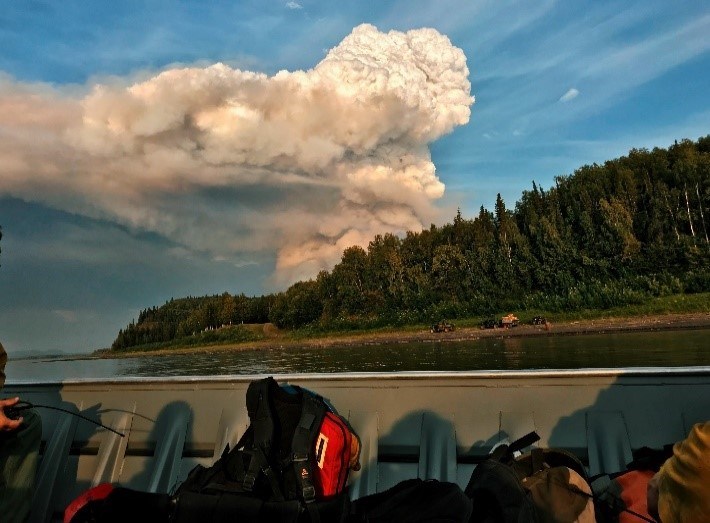Last updated: October 26, 2021
Article
Fire Ecology Annual Report 2018 Fire Season
By Jennifer L. Barnes and Jennifer L. Hrobak

NPS Photo/R. Nilsson
Despite the relatively quiet fire season in Alaska for 2018, the National Park Service in Alaska had a moderate fire season. Overall, 24 wildfires spanned across seven park units for a total of 36,342 acres that burned within and adjacent to park boundaries with 21,305 acres burned on NPS owned lands (Table 1). Cape Krusenstern National Monument had six lightning caused fires in early June. This was unprecedented for the area, which has only had four fires since 1955. The largest fire within the park boundaries was Andrew Creek in Yukon-Charley Rivers National Preserve, which burned 7,869 acres. Western Area fire management staff accomplished fuels reduction at 14 sites and burned the Admin pile in Denali during 2018 and Eastern Area fire management staff accomplished fuels reduction projects at 12 sites in 2018 (Table 1).
| Park Unit | Number of Wildfires1 | Total Acres Burned1 | Number of Wildfires started on NPS Lands2 | Acres Burned NPS Lands2 | Number of Fuels Treatment Sites | Acres of Prescribed Fires |
|---|---|---|---|---|---|---|
| Bering Land Bridge | 1 | 2.9 | 1 | 2.9 | - | - |
| Cape Krusenstern | 6 | 287 | 6 | 287 | - | - |
| Denali | 4 | 18,284 | 3 | 3,250.9 | 9 | 3.09 |
| Gates of the Arctic | 1 | 736.3 | 1 | 736.3 | - | - |
| Kobuk Valley | - | - | - | - | 2 | - |
| Noatak | 1 | 517.6 | 1 | 517.6 | 3 | - |
| Wrangell-St. Elias | 3 | 0.3 | 2 | 0.2 | 6 | - |
| Yukon-Charley Rivers | 8 | 16,514 | 7 | 16,510 | 6 | - |
| Total for Region | 24 | 36,342 | 21 | 21,305 | 20 | 3.09 |
Tags
- bering land bridge national preserve
- cape krusenstern national monument
- denali national park & preserve
- gates of the arctic national park & preserve
- kobuk valley national park
- noatak national preserve
- wrangell - st elias national park & preserve
- yukon - charley rivers national preserve
- fire ecology
- alaska
- wildfire
- maintain and restore resilient landscapes
- cohesive strategy response to wildfire
- ak1
